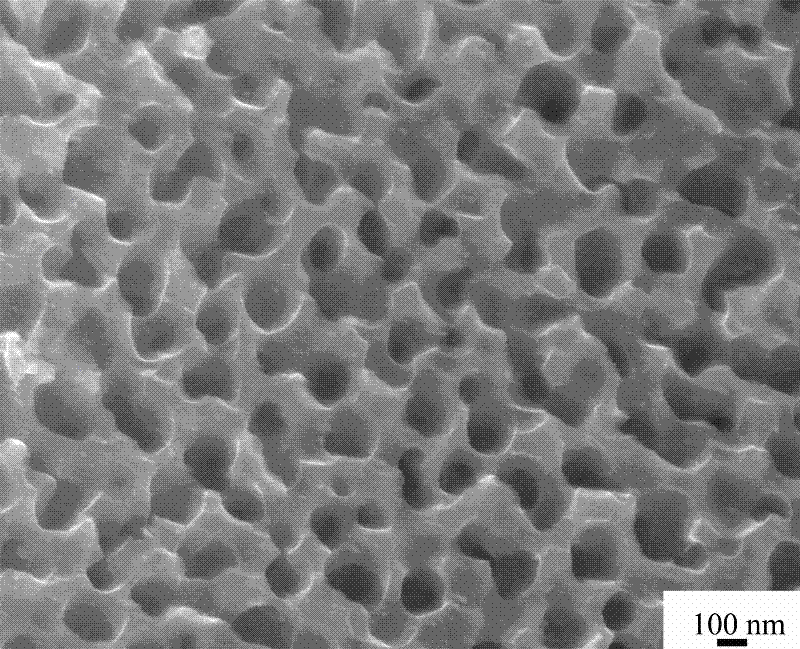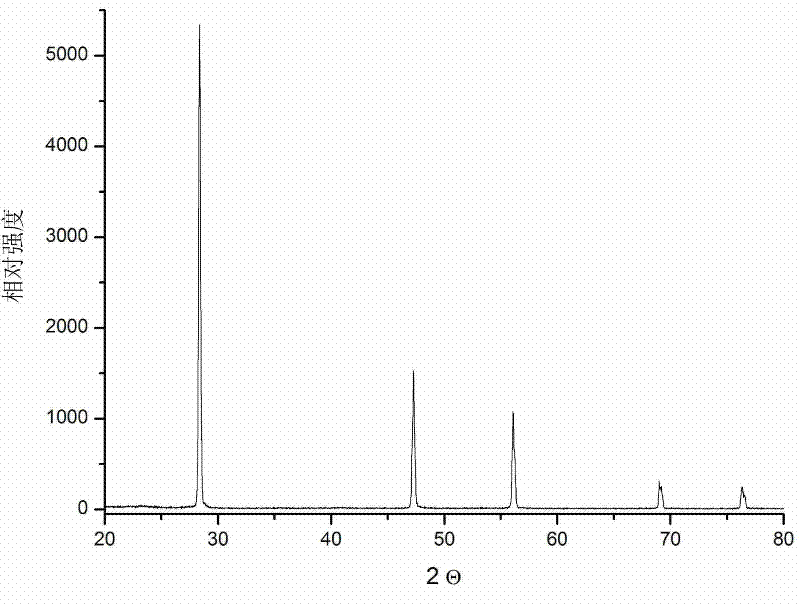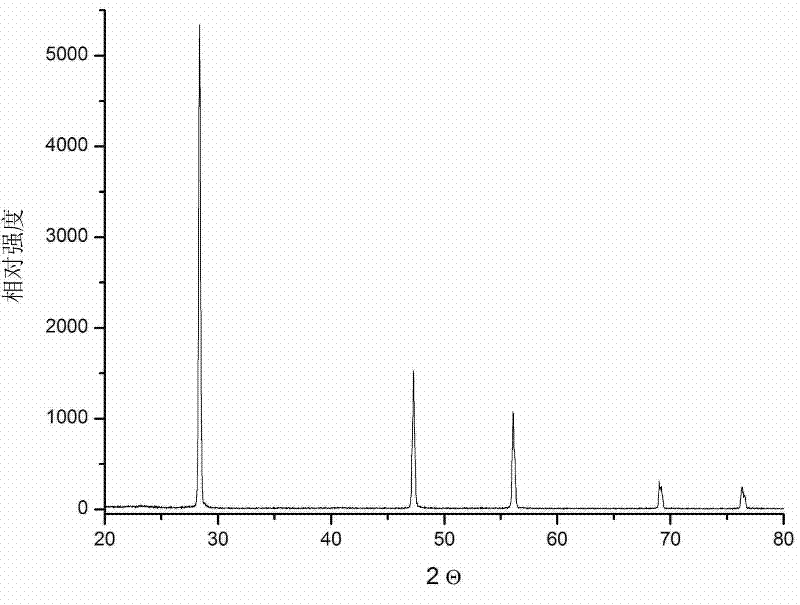A method for preparing porous silicon by magnesia thermal reduction
A technology of porous silicon and magnesium heating, applied in chemical instruments and methods, silicon compounds, inorganic chemistry, etc., can solve the limitations of large-scale commercial application of porous silicon, the difficulty of mass preparation of porous silicon powder, and the limited thickness of porous silicon films, etc. problem, to achieve the effect of low cost, environmental friendliness and high luminous efficiency
- Summary
- Abstract
- Description
- Claims
- Application Information
AI Technical Summary
Problems solved by technology
Method used
Image
Examples
Embodiment 1
[0019] (1) At room temperature, SiO powder and magnesium powder were uniformly mixed in a molar ratio of 1:1 under the protection of argon, then placed in a tubular atmosphere furnace, heated to 500°C in an argon flow, and reacted at a constant temperature for 6 hours, and then naturally Cool to room temperature;
[0020] (2) Soak the obtained product in hydrochloric acid with a concentration of 0.1 mol / L for 24 hours, remove magnesium oxide, and obtain a solid product after filtration, then fully wash with deionized water, then fully wash with absolute ethanol, and dry Afterwards, porous silicon powder is obtained. Its specific surface area is about 200 m 2 / g, the porosity is above 90%. Its microstructure and phase analysis are as follows figure 1 with figure 2 shown. from figure 1 It can be seen that the product has a nanoporous structure with a uniform pore size distribution. from figure 2 According to the XRD diffraction spectrum analysis of the material, the pr...
Embodiment 2
[0022] (1) SiO at room temperature 0.5 The powder and magnesium powder are evenly mixed at a molar ratio of 1:0.5 under the protection of argon, then placed in a tube-type atmosphere furnace, heated to 450°C in an argon flow, and reacted at a constant temperature for 12 hours, and then naturally cooled to room temperature;
[0023] (2) Soak the obtained product in an ethanol solution of hydrochloric acid with a concentration of 6 mol / L for 0.5 hours, remove magnesium oxide, and obtain a solid product after filtration, then fully wash it with deionized water, and then fully wash it with anhydrous ethanol Porous silicon powder is obtained after washing and drying. Its specific surface area is about 210 m 2 / g, the porosity is above 90%.
Embodiment 3
[0025] (1) At room temperature, SiO powder and magnesium powder were uniformly mixed at a molar ratio of 1:1.5 under the protection of argon, then placed in a tube-type atmosphere furnace, heated to 600°C in an argon flow, and reacted at a constant temperature for 4 hours, and then naturally Cool to room temperature;
[0026] (2) Soak the obtained product in dilute sulfuric acid with a concentration of 0.1 mol / L for 24 hours, remove magnesium oxide, and obtain a solid product after filtration, then fully wash with deionized water, then fully wash with acetone, and dry Porous silicon powder is obtained. Its specific surface area is about 180 m 2 / g, the porosity is about 80%.
PUM
| Property | Measurement | Unit |
|---|---|---|
| Specific surface area | aaaaa | aaaaa |
| Specific surface area | aaaaa | aaaaa |
| Specific surface area | aaaaa | aaaaa |
Abstract
Description
Claims
Application Information
 Login to View More
Login to View More - R&D
- Intellectual Property
- Life Sciences
- Materials
- Tech Scout
- Unparalleled Data Quality
- Higher Quality Content
- 60% Fewer Hallucinations
Browse by: Latest US Patents, China's latest patents, Technical Efficacy Thesaurus, Application Domain, Technology Topic, Popular Technical Reports.
© 2025 PatSnap. All rights reserved.Legal|Privacy policy|Modern Slavery Act Transparency Statement|Sitemap|About US| Contact US: help@patsnap.com



